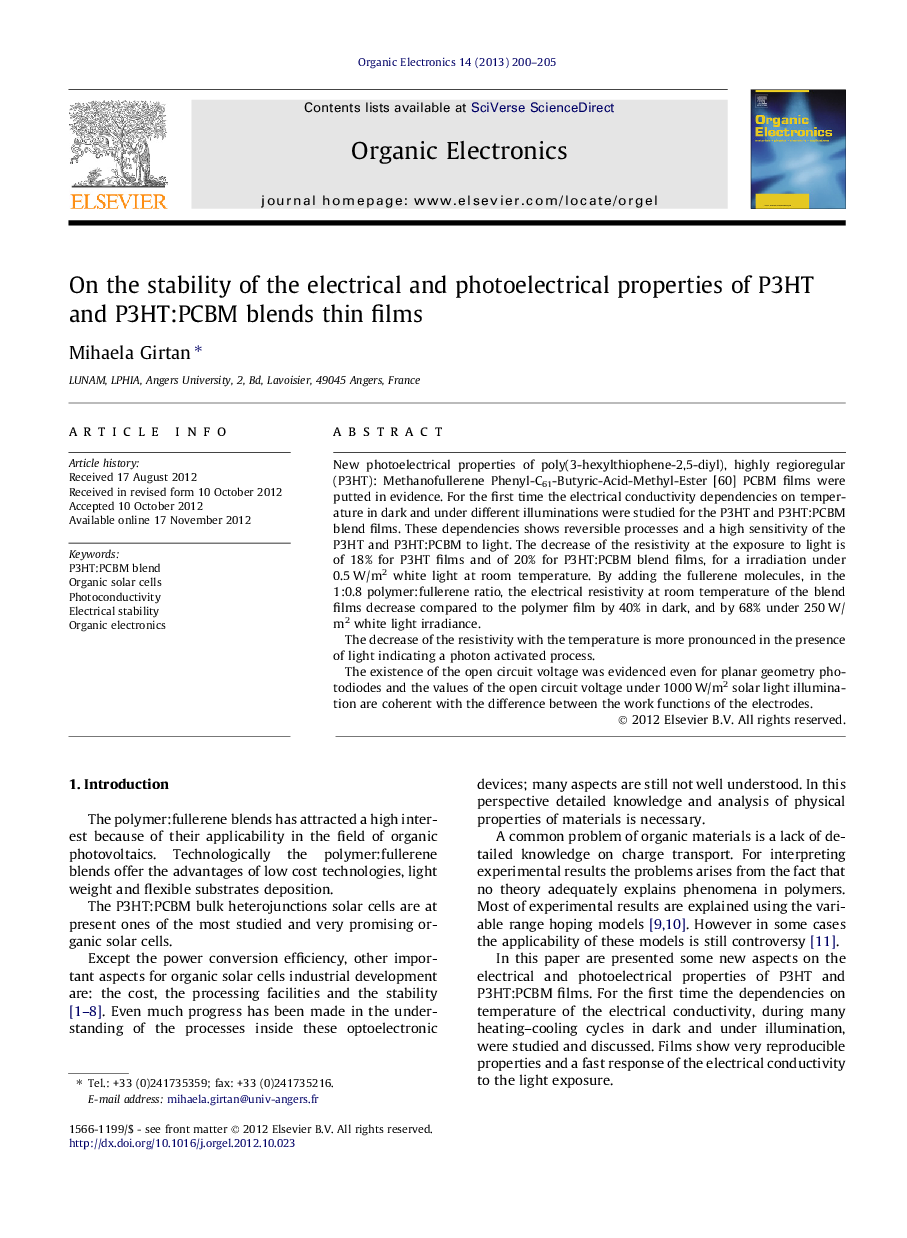| Article ID | Journal | Published Year | Pages | File Type |
|---|---|---|---|---|
| 1263956 | Organic Electronics | 2013 | 6 Pages |
New photoelectrical properties of poly(3-hexylthiophene-2,5-diyl), highly regioregular (P3HT): Methanofullerene Phenyl-C61-Butyric-Acid-Methyl-Ester [60] PCBM films were putted in evidence. For the first time the electrical conductivity dependencies on temperature in dark and under different illuminations were studied for the P3HT and P3HT:PCBM blend films. These dependencies shows reversible processes and a high sensitivity of the P3HT and P3HT:PCBM to light. The decrease of the resistivity at the exposure to light is of 18% for P3HT films and of 20% for P3HT:PCBM blend films, for a irradiation under 0.5 W/m2 white light at room temperature. By adding the fullerene molecules, in the 1:0.8 polymer:fullerene ratio, the electrical resistivity at room temperature of the blend films decrease compared to the polymer film by 40% in dark, and by 68% under 250 W/m2 white light irradiance.The decrease of the resistivity with the temperature is more pronounced in the presence of light indicating a photon activated process.The existence of the open circuit voltage was evidenced even for planar geometry photodiodes and the values of the open circuit voltage under 1000 W/m2 solar light illumination are coherent with the difference between the work functions of the electrodes.
Graphical abstract.Figure optionsDownload full-size imageDownload as PowerPoint slideHighlights► The electrical conductivity dependencies on temperature in dark and under different illuminations were studied. ► These dependencies shows reversible processes and a high sensitivity of the polymers electrical conductivity to light. ► The decrease of the resistivity with the temperature is more pronounced in the presence of light. ► The studies of the photodiodes in a planar geometry put in evidence the existence of an open circuit voltage.
